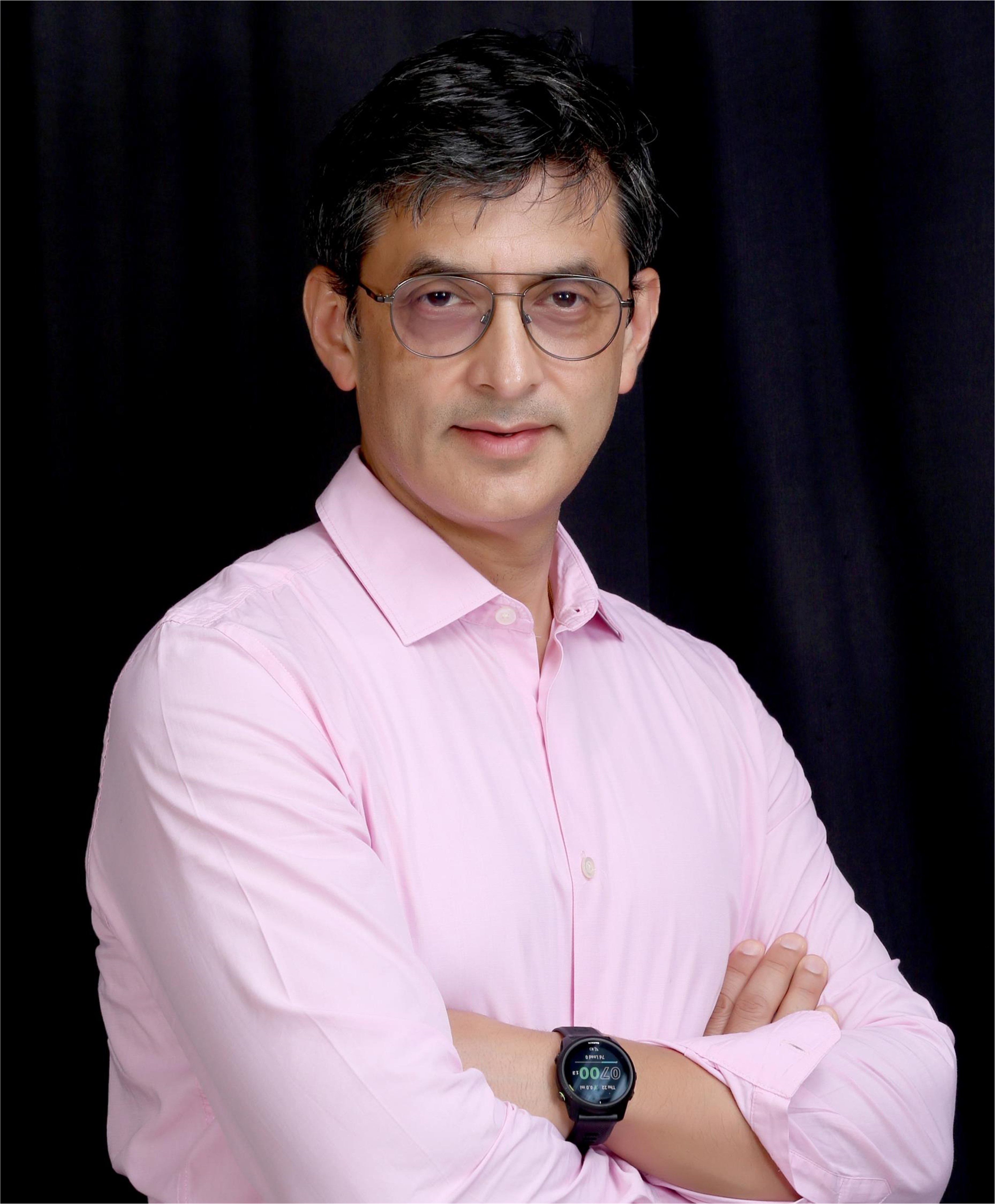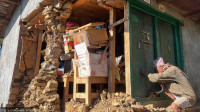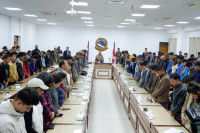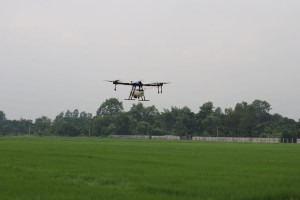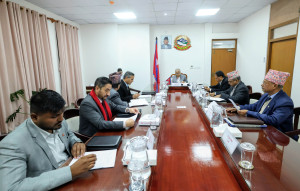Columns
Making development finance count
The renewed global commitment to enhance it must enable deeper reforms in developing countries.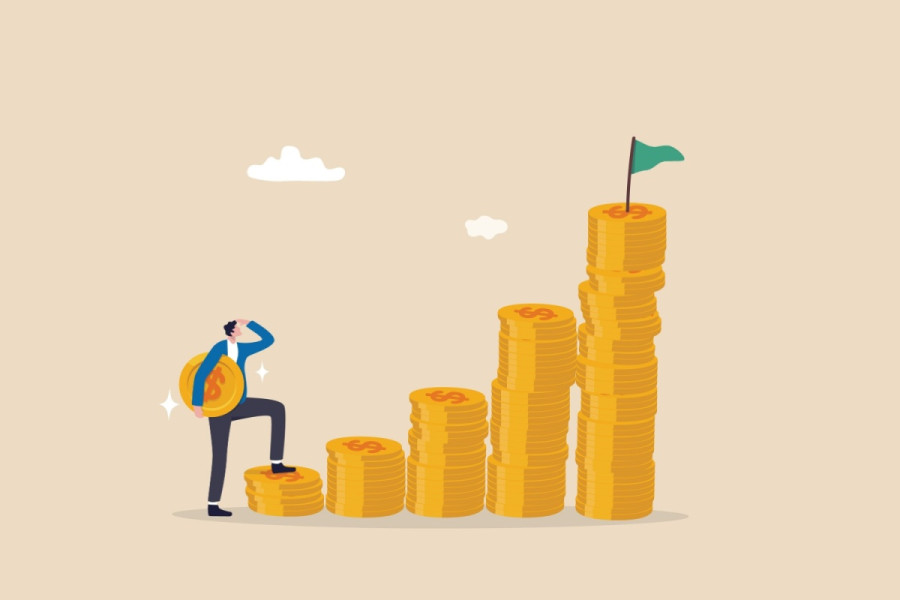
Bishal Thapa
By all measures, Prime Minister KP Oli has had a busy week. He is in the beautiful historic river town of Seville, Spain, attending the United Nations (UN) 4th International Conference on Financing for Development, which started on Sunday, June 30.
He has been meeting kings, presidents and prime ministers, and as Chair of the UN Group of Least Developed Countries, calling for increased equitable global finance to help developing countries meet their development needs.
Don’t be disappointed that the prime minister didn’t have time to stop by the local Seville markets for souvenir trinkets to bring back home. Instead, he was busy pushing hard to try and get developing countries the $4 trillion they will need to help meet the Sustainable Development Goals (SDGs) by 2030.
Progress required to achieve the SDGs by 2030 is off track. Only 17 percent of the goals are likely to be met, and about one-third have “stalled or regressing,” the 2024 report on the SDG assessed.
The SDGs are particularly failing the most vulnerable people, the SDG report card indicates. Over the past six years, 23 million additional people have been pushed into extreme poverty. Between 2019 and 2022, 100 million more people suffered from hunger. Gains on overall global health have decelerated over the last decade. Recent wars and conflicts have already displaced 120 million people.
With the disheartening assessment on the SDG are also plenty of success stories which validate that development challenges can be addressed. Nepal itself is an example. In Seville, Oli reaffirmed that by next year, Nepal intends to graduate to a higher income bracket from its current status as a least developed country. Nepal has posted strong gains on poverty reduction, health, education, infant mortality and several other socio-economic parameters. Like Nepal, 14 other least developed countries will move to a higher income group.
With adequate resources, collaboration and peace, improved wellbeing and prosperity are still possible for people around the world. The shared global commitment of the SDGs still remains a meaningful platform for addressing development challenges.
The UN-led dialogues at Seville renewed that global commitment. In partnership with Zambia, Mexico and Norway, all of whom served as co-facilitators with Nepal on the Seville dialogues, UN member states endorsed the “Compromiso de Sevilla” (the Seville commitment), a global framework for finance that could enable developing countries access the resources they need for their development objectives.
The current assessment is that developing countries will need $4 trillion to meet the SDGs, which is a lot or not that much depending on how you look at it. The amount is 3.5 percent of the global Gross Domestic Product (GDP), and 10 percent of the growth in global GDP over the last decade. Approximately half a trillion would be raised annually if all developed countries were to meet their goal to provide 0.7 percent of Gross National Income (GNI) as official development assistance (ODA).
A week before the Seville conference, member countries of the North Atlantic Treaty Organization (NATO) agreed at a meeting in the Hague to “investing 5% of Gross Domestic Product (GDP) annually on core defence requirements and defence- and security-related spending by 2035.” NATO counties would have invested $2.4 trillion if they had met the 5 percent goal in 2024 (based on an estimate from Reuters).
The UN adopted the 0.7 percent goal for official development assistance in 1970. Fifty-five years later, in Seville, Prime Minister Oli called for rich countries to meet that commitment.
Two thumbs up to Oli for calling on developed countries to honour the 0.7 percent development assistance goal, and to the Government of Nepal for their leadership in shepherding the Seville commitment.
The Seville commitment does not specifically reference the $4 trillion of unmet investment needs. But it does call on developed countries “to achieve the target of 0.7 per cent of gross national income for official development assistance to developing countries.”
Only four countries met that target in 2024, the Organization of Economic Cooperation and Development (OECD) reports. Development assistance actually fell 7 percent in 2024 and was at 0.33 percent of GNI, less than half the committed goal. The drop in development assistance could be higher this year.
There are no guarantees that Seville will yield higher flows of development finance. But it does represent a “chance to change the course,” as Oli said. The Seville commitments reflect a balanced, ambitious framework that identifies necessary reforms at all levels, actions to increase fiscal space, reduce debt challenges, lower the cost of capital, and mobilise additional financing in predictable, affordable and accessible ways.
Away from the hustle and bustle of meeting kings, presidents and prime ministers, in the serenity of the long flight back home, Oli will have the opportunity to reflect quietly on what he and his 21-member entourage achieved in Seville. Perhaps he will meditate on what his country, and many other developing countries with deep development challenges, will also need to do.
“Corruption, theft, and tax evasion cost developing countries $1.6 trillion annually” and at least $2.6 trillion globally, reports Uday Ranamagar in a study analysing public sector corruption in Nepal that was published in Nepalese Journal of Public Administration in 2023.
Suddenly and in comparison to the money lost on corruption, the $4 trillion investment gap for meeting the SDGs doesn’t feel as overwhelming and also somewhat different. Is the $4 trillion of unmet need inclusive of the $1.6 trillion that would be lost to corruption, or over and above that?
Nepal scored 34 of 100—a total fail—and ranked 107 out of 180 countries on Transparency International’s corruption index in 2024. Twelve percent of people using public services reported paying a bribe just in the last 12 months.
Many of the developing countries on whose behalf Oli advocated so eloquently in Seville and so purposefully negotiated the Seville commitments make up the bulk of the bottom half of that disgraceful corruption index.
Corruption has eroded public faith in government, reduced confidence in democracy, justified the retraction of development assistance, increased political instability and undermined progress on the SDGS.
Increased transparency and improved governance are key goals of the Seville commitment. That goal may be far less expensive than the $4 trillion for unmet needs. But it will also be a lot more demanding on the resolve of developing country governments to do more to ensure a just, fair, equitable, responsive, honest, safe and clean environment for their citizens—all the same traits that they demand from developed countries.
Historical global injustices and colonialism are directly responsible for seeding the unequal economic and financial systems that have created the need for the SDGs in the first place. But the repeated failures and corruption of our governments have kept us chained there.




 9.12°C Kathmandu
9.12°C Kathmandu